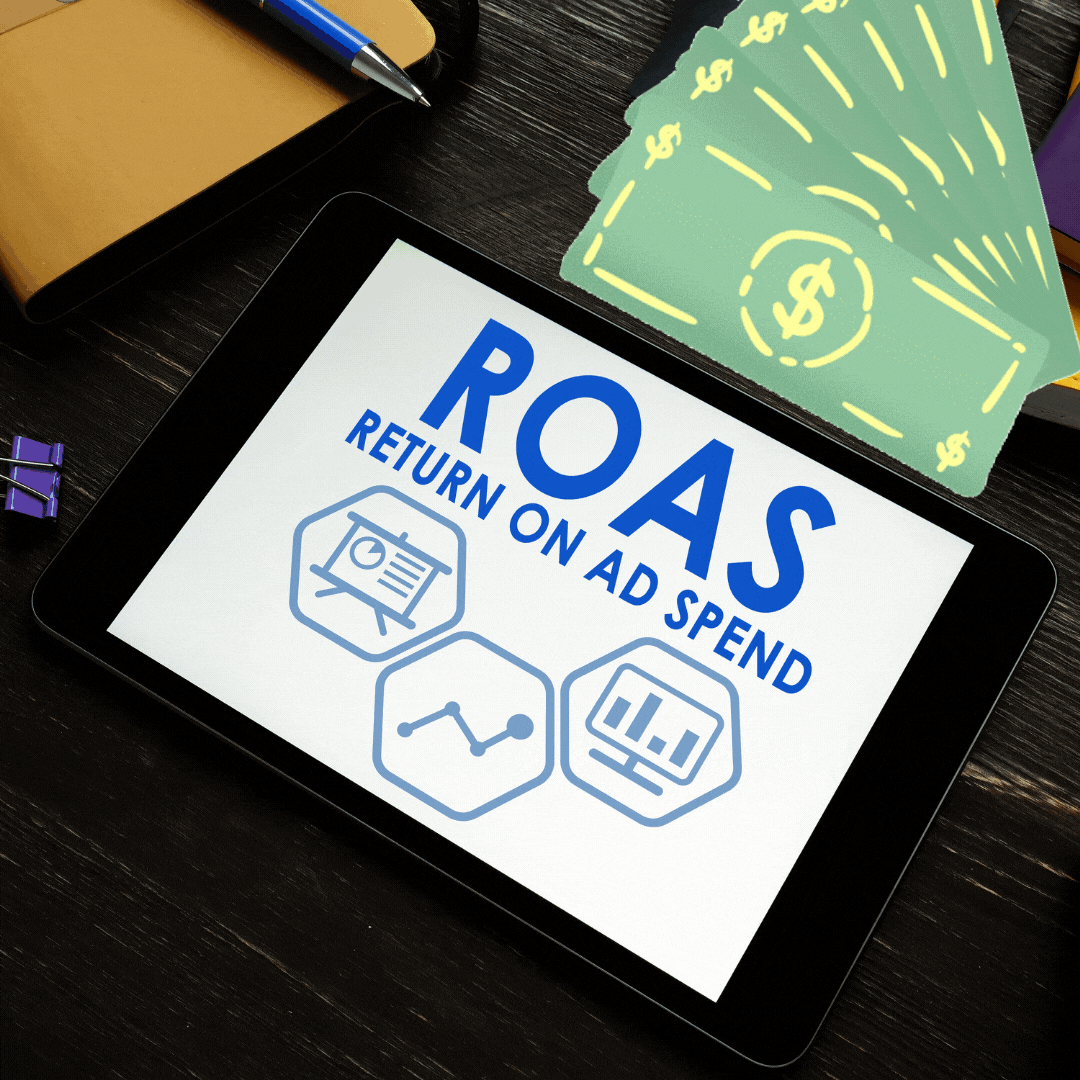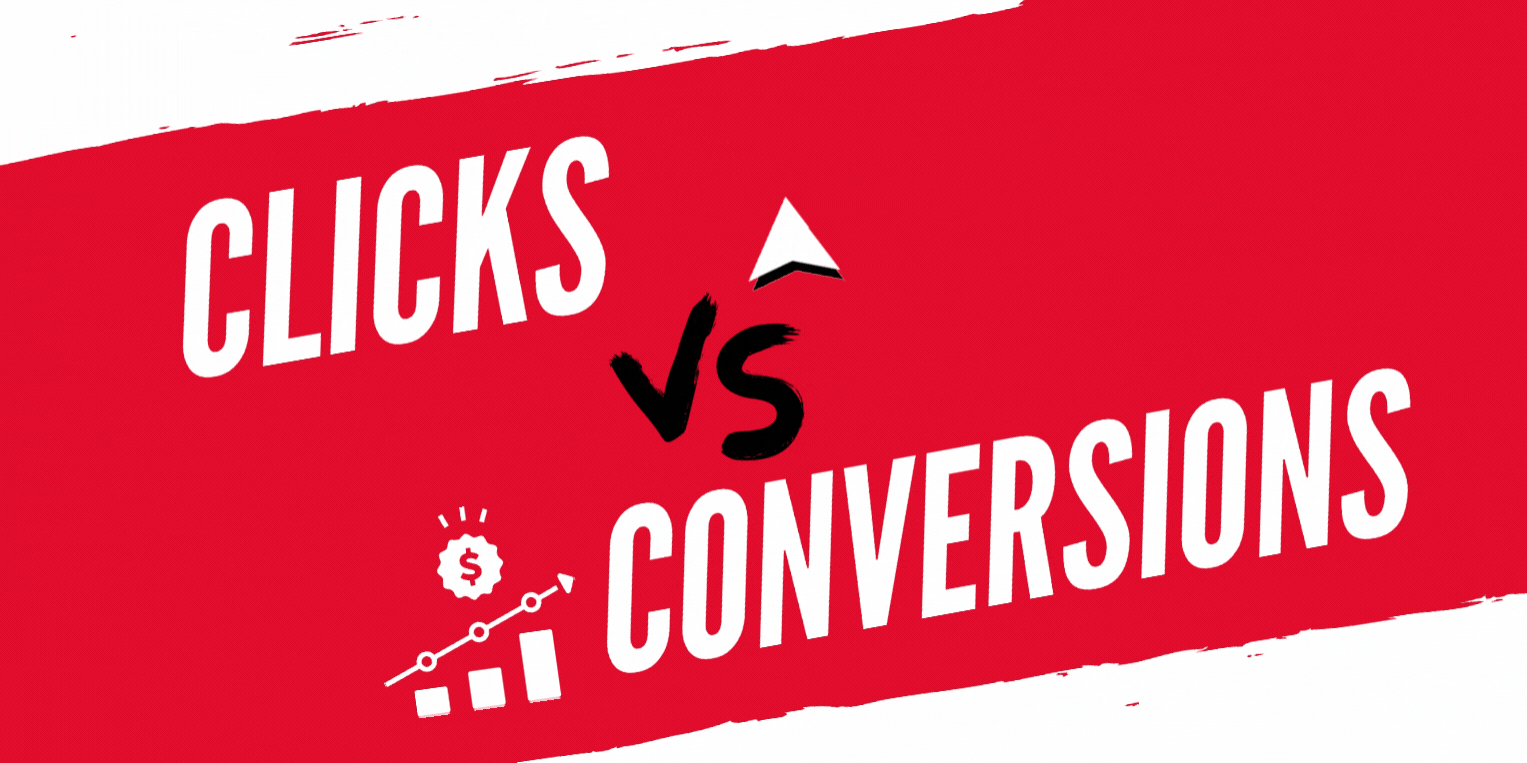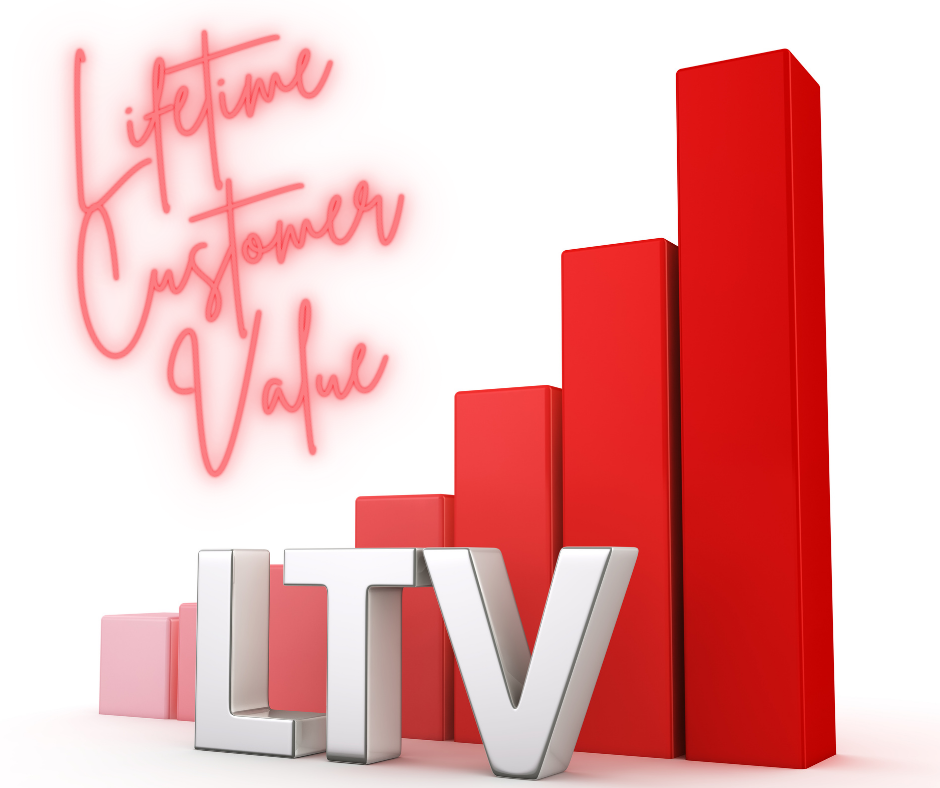 We want to let you in on a little secret about paid media advertising. Ready?
We want to let you in on a little secret about paid media advertising. Ready?
The number of clicks doesn’t really matter! Say it with us!
What prospects do once they click, that’s the good stuff.
Think of it this way: What is worth more? One hundred ad clicks with one sales conversion or 50 ad clicks with 10 sales conversions? Exactly. The 20% conversion rate with 50 clicks is worth far more than the 1% conversion rate with 100 clicks.
This may sound obvious, but even today, current clients ask us, “How many clicks did we get?” And new clients wonder, “How many ad clicks should be expected when our campaign begins?”
At the end of the day, this is good data to have, absolutely, but it only means so much.
In today’s blog post, we’re going to show you seven metrics you need to pay attention to—that are far more important than your click volume. Feel free to ask your agency for any of the following metrics to better understand how your marketing investment is performing.
Let’s dive in!
Return on Ad Spend
You may have heard this kind of industry jargon before, “We are running at a 4x ROAS” or “We went from a ROAS of 2 to a ROAS of 4.” When we discuss ROAS (pronounced “row-as”) this is marketing shorthand for the percent of return we are seeing from a campaign. So, 4x ROAS means we are seeing a 400% return on ad spend.

Knowing your return on ad spend for the month, quarter, or year quickly helps you understand how your investment is performing at a high level.
So, the next time your paid media team (or agency) says, “Our ads got 100 clicks this month!”—follow this up with a simple question, “What was our ROAS?” Any paid media team worth their salt will be able to tell you what your return on ad spend is across each campaign without a problem.
If they can’t, won’t, or for some reason don’t know your ROAS, you may need to start looking for a new team to manage your paid media. The higher the number (4x, 5x, 10x), the better your campaigns are performing from a profitability standpoint.
Know Your Conversions
If you’ve been working with paid media or marketing on any level over the past decade, you have likely heard the word “conversions,” and you should be asking questions like, “How many conversions did we get? How well is the campaign converting? Which ad variation is converting the best?”
What can we say? We love conversions.
Now, there are several levels to consider, including ad conversion, landing page conversion, sales conversion, etc.
So, if all conversions are great, why do we break them apart like this? Because we (and you) need to know what is not converting, so we can understand what needs to be improved.

Earlier on we said that “click volume” should not be the top priority. But for simplicity’s sake, let’s say that your Google ad campaign got 100 clicks this week, and out of that you had 20 landing page conversions. That is pretty good! You had 20% ad conversion and 20 new leads for your team. (Way to go, rockstar!)
But how many of those 20 “converted” into paying customers? Let’s say zero. Not so good, right? (Make no mistake, you’re still a rockstar, but we’ve got a little more work to do!)
So, what happened? Were the leads not qualified? Did the sales team not follow up with them? Or maybe something else is throwing a conversion wrench into things.
This is why you should know your average conversion rates from paid media ads all the way down to the final sale, so you know what issues to address to improve your overall marketing performance.
Measure Your Goals
It’s good to have goals, right? We think so!
Think of goals like “micro-conversions” that can be tracked so you know what individual elements of your campaign are (or are not) performing the way you intended.

A perfect example is a landing page you created for your campaign. On this page, you have call-to-action buttons, a form or two, and a video. Each one of these elements can be a “goal” that you (or your team) can track.
For example, if you have a goal attached to your video, and after 100 clicks nobody has completed this goal (i.e., watched the video), you may have a problem. Maybe you need a new video, or a longer or shorter video. Maybe the video is at the bottom of the page instead of at the top so nobody knows it’s there. Know your goals and you’ll know what needs to be fixed.
A/B Test Results
 In paid media (and most marketing endeavors), you should always be testing. Testing ad copy, landing pages, sitelinks, callouts, promotions, etc. The testing practically never ends. So, what is your team testing?
In paid media (and most marketing endeavors), you should always be testing. Testing ad copy, landing pages, sitelinks, callouts, promotions, etc. The testing practically never ends. So, what is your team testing?
You may not need to know every single element that is being tested—this subject can make practically any head spin. But at a high level, you should know what is and is not working.
If your team (or agency) is not performing A/B testing on an ongoing basis, there may be a lot of cash (not to mention conversions and ROAS) being left on the table. So, here are a few questions you want to be asking yourself or your team when it comes to testing:
– How many variations of our paid media ad are we testing?
– How many landing pages are we testing?
– What are we testing on the landing pages?
– How many promotions are we testing? (Free month trial, 20% off your first order, etc.)
– How long are we running tests before making adjustments (or picking winners)?
*Pro tip: Adequate testing can last weeks or months depending on your ad performance and traffic.
This is just scratching the surface, but be sure that your team is testing and can provide insights as to why your test “winners” are, in fact, winning.
Demographics, Geographics, and Beyond!
What audience is really listening to what you are saying? Again, this is an area that can be overlooked when advertisers are laser-focused on “click volume” rather than “click quality.”
Age groups, gender, location, and a slew of other demographic and geographic data can help you form a solid understanding of which audiences are converting at the highest levels.

If, out of 100 ad conversions, 80% were coming from major cities along the east coast, wouldn’t it make more sense to focus your efforts on what is giving you the best return on investment? Yes. The answer is yes.
Call it what you will, but this idea of “trimming the fat” on your campaigns is crucial when it comes to improving campaign performance.
Here are just a few performance metrics that you should be considering and questions you should be asking:
– Where are most of your conversions coming from?
– What time are these conversions happening most frequently?
– What days of the week do you see the most conversions?
– What gender and age groups are converting at the highest levels?
– What seasons are driving more conversions across different demographics?
There is a lot more digging you can do, but it all comes down to looking at past total ad clicks and understanding the who, where, why, what, and how of your conversions.
Cost Per Lead (CPL or CPA)
 This is perhaps the most popular among service-based businesses like plumbers, HVAC professionals, landscapers, etc. Knowing your cost per lead is important for ensuring that the cost of attracting a new customer is not exceeding the cash they will be spending with your business.
This is perhaps the most popular among service-based businesses like plumbers, HVAC professionals, landscapers, etc. Knowing your cost per lead is important for ensuring that the cost of attracting a new customer is not exceeding the cash they will be spending with your business.
Know that there is no hard and fast rule for “cost per lead” or “cost per acquisition” except that, usually, the more competitive and expensive your service, the greater your CPL.
For example, if you spent $10,000 and got 1,000 ad clicks, your cost per click clocks in at $10. If 100 of those clicks are converted into leads, your cost per lead is $100 ($10,000/100 leads). Pretty straightforward—however, if only 50 of those clicks converted into leads, your CPL jumps to $200, which is not as enticing of a prospect.
Now, if your product or service has an average sales value of $10,000, this might be just fine, but if you are providing a $300 product or service, this is simply not sustainable.
Over time, your goal should be to see your CPL or CPA dropping. There will be a time where your CPA hits a point it will not drop lower, which is normal. But overall, you need to be asking about CPL, especially in relation to every other metric we have laid out up to this point.
Lifetime Value (LTV)
 Finally, the metric that 100% cannot be overlooked or understated—lifetime customer value, or LTV. Most advertisers and businesses tend to have blinders on when it comes to LTV and running campaigns…for a couple of reasons.
Finally, the metric that 100% cannot be overlooked or understated—lifetime customer value, or LTV. Most advertisers and businesses tend to have blinders on when it comes to LTV and running campaigns…for a couple of reasons.
First, this is not a metric that Google Ads analytics just hands you, because Google doesn’t know your pricing or rate of repeat purchasing. Second, it is often argued that LTV is beyond the scope of the ad campaign when, in reality, if the campaign didn’t drive that customer in the first place, the business would have missed out on the LTV of that customer.
Here is an oversimplified look at LTV and how to consider it when it comes to your investment.
– How long (on average) do you keep a customer? Let’s say one year (12 months)
– How much (on average) do these customers spend per month? Let’s say $100
– Multiply your months (12) by monthly spending ($100) and your LTV would equal $1,200
So why does this matter? If your customers are usually repeat buyers, you might be able to justify a higher CPC, CPA, or overall cost per conversion.
All in all, when you are trying to get a read on the “real return” of your paid media marketing efforts, include your LTV calculation to give yourself and your business a well-rounded view of your ROI.
Thinking Beyond the Clicks
Now you have the metrics (and vocabulary) you need to dig deeper into your paid media campaigns. Start asking your team, your manager, or your agency about these metrics so you can get a grip on the impact your ads are making.
No single metric is going to tell you the whole story, but these seven “beyond-the-click” metrics are going to help guide improvement, investment, and ROI in a more holistic fashion.
Better yet, if you need help, drop our experts a line, and we can provide a complimentary analysis of all these metrics so you know where to begin—or how to move forward.